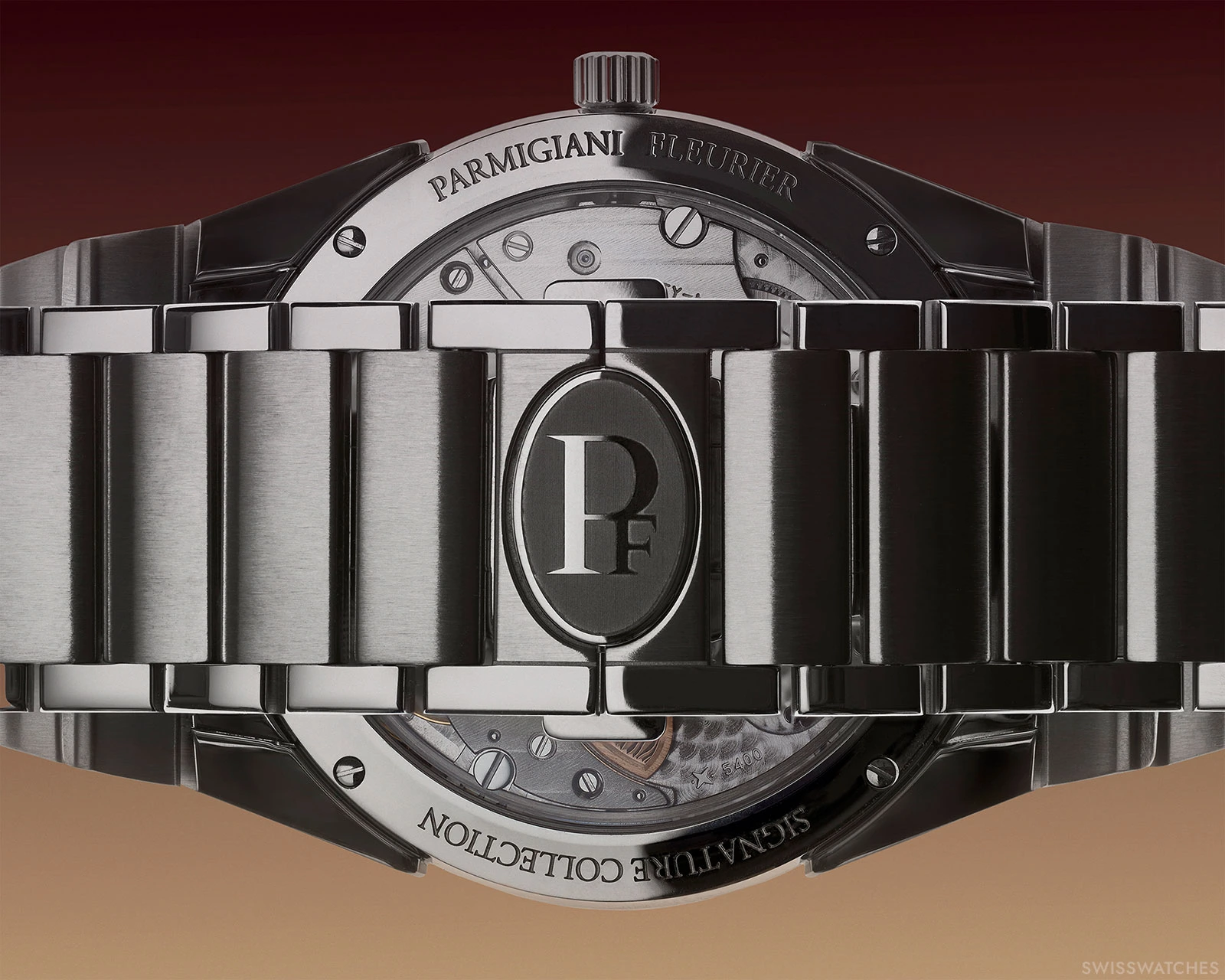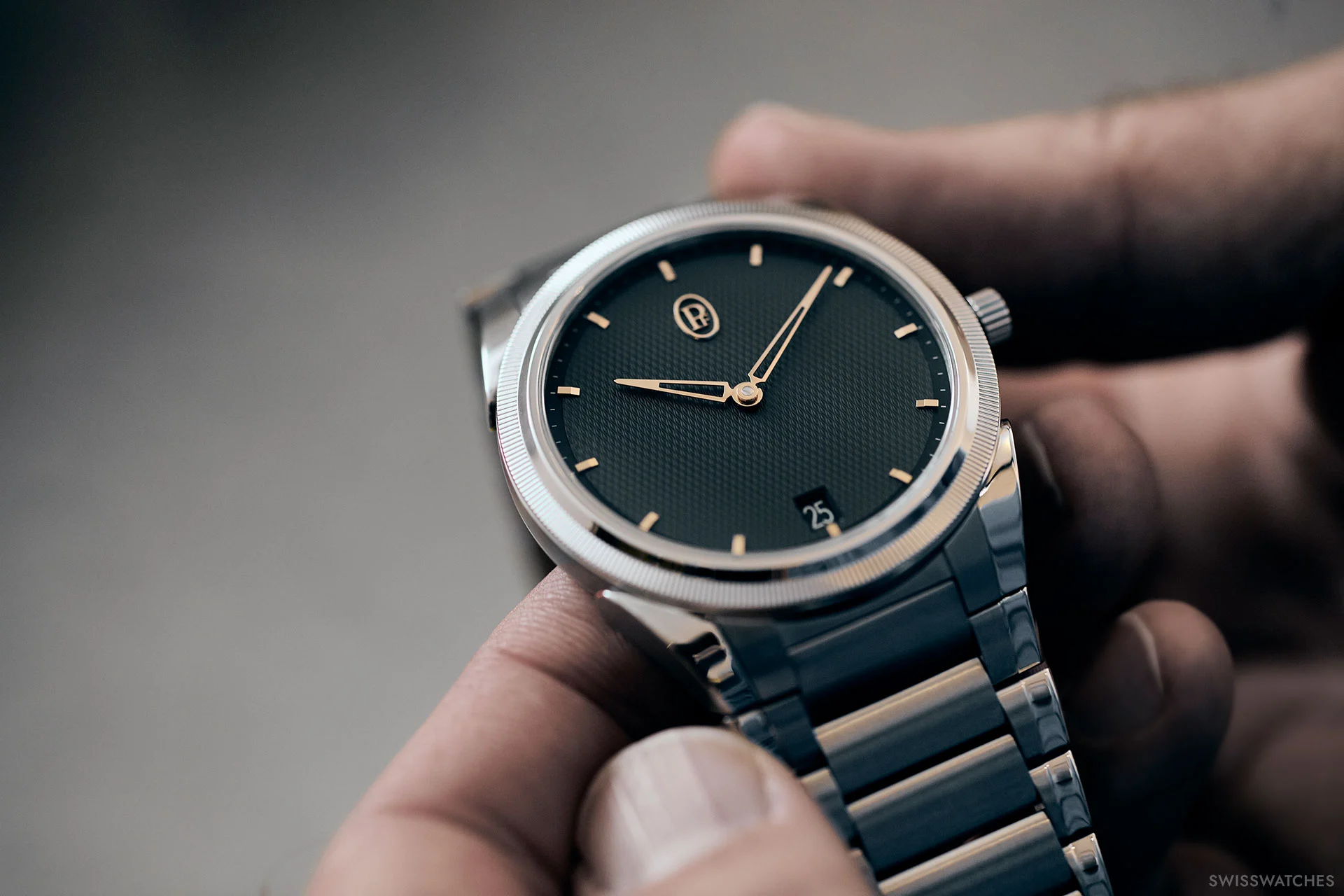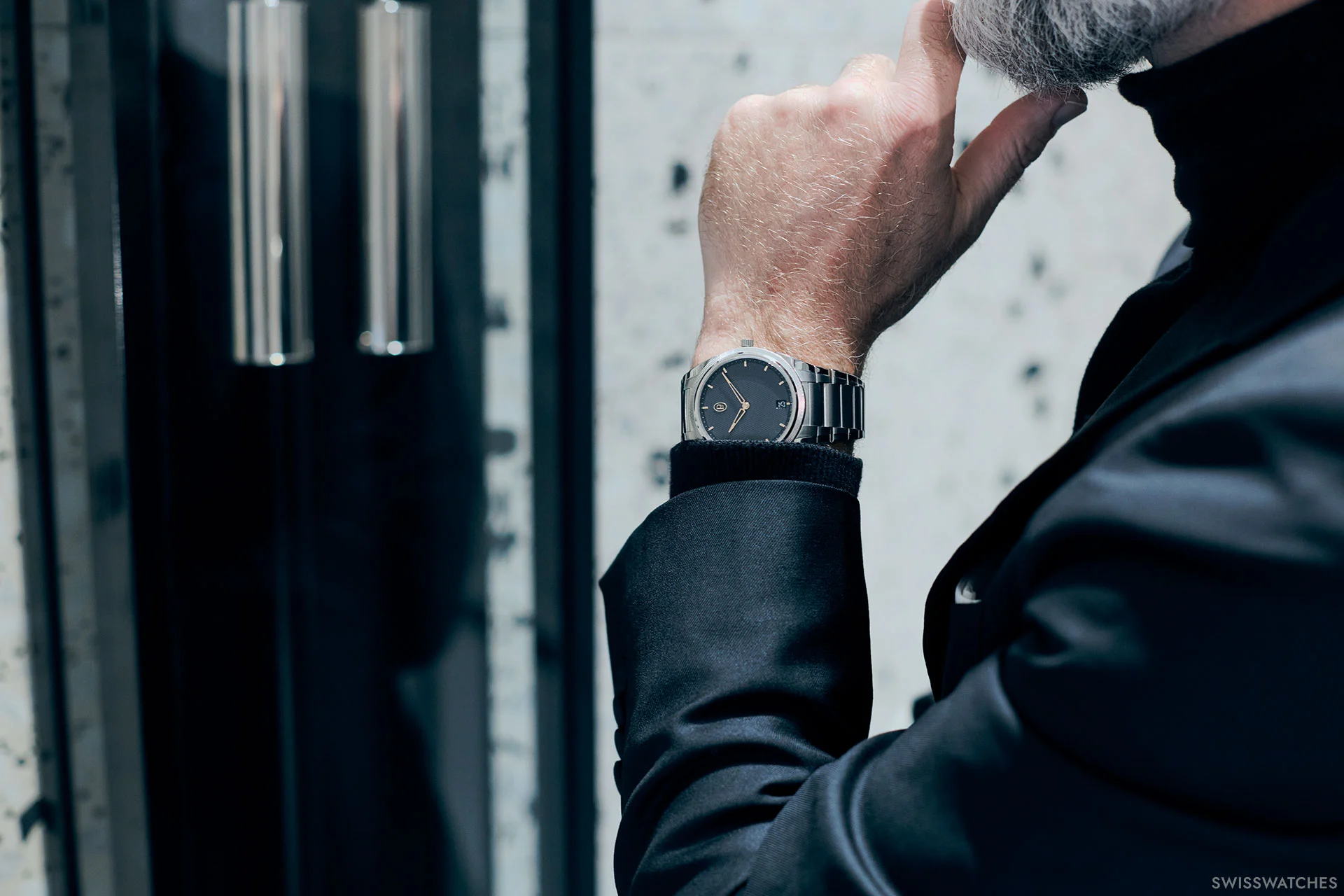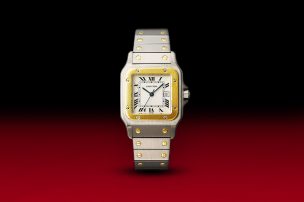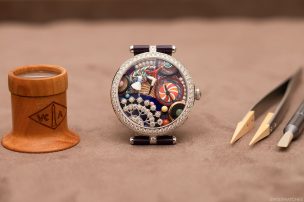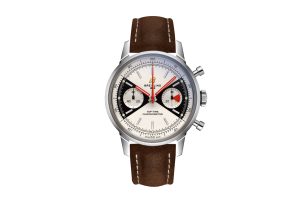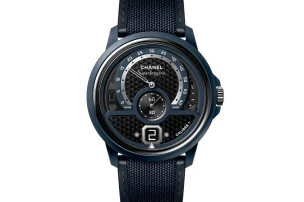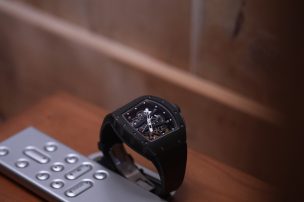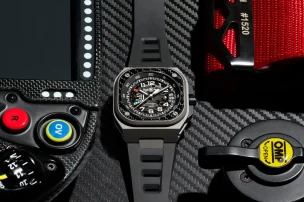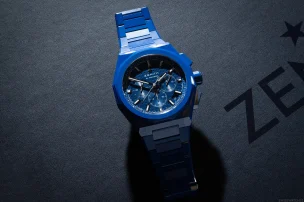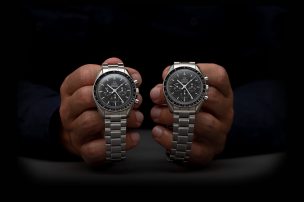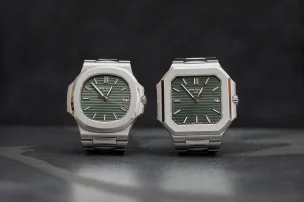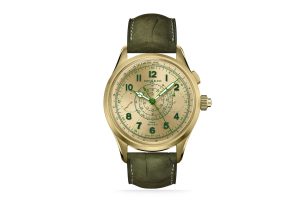
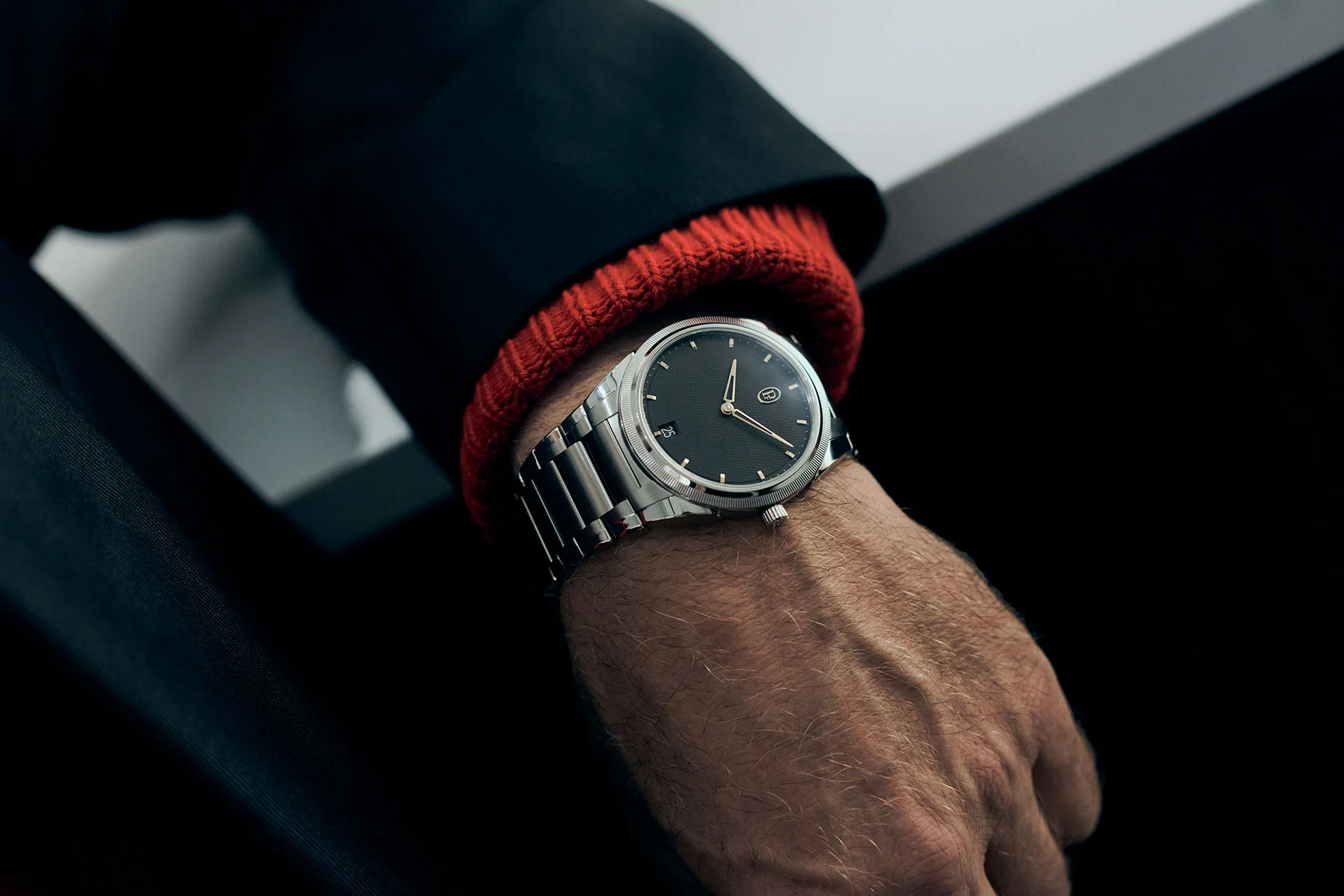
Uncovering the Value of Limited Editions: Insights From The First Wempe Signature Collection With Parmigiani Fleurier
As an author who has spent over twenty years writing about mechanical wristwatches, being tucked away for two hours in a shadowy wine cellar in Cologne’s old town with thirty potential watch clients is truly exciting. It’s not just the rare wines they savoured together – including a Bordeaux from 1988 – but the open conversations that started to flow by the third glass, slowly revealing the true motivations behind each person’s passion for collecting. For me, the collectors’ motives remain the most fascinating aspect of fine mechanics. One thing is clear: no one would spend 29,100 euros simply to tell the time, as in this case.

The launch of the seventh Wempe Signature Collection watch
Welcome to a unique look at the launch of the seventh Wempe Signature Collection watch model, a collaboration with the remarkable yet relatively young Swiss Jura-based manufacture, Parmigiani Fleurier. If you’re looking for an in-depth review of the limited-edition Parmigiani Fleurier Tonda PF Microrotor, capped at just 25 pieces, I recommend my colleague Emilia’s detailed article here. The limitation number quickly becomes the focal point of the conversation, sparking the first question at the table: is this a meaningful limitation?

The search for something truly rare
Before we tackle the conversation, let’s take a step back. That afternoon, alongside the exceptional Berlin photographer Ragnar Schmuck, I had the rare opportunity to wear the watch, with its micro-rotor and platinum bezel, for two hours, in a completely different cellar: the basement of the Wempe in Cologne. Although some might find the interior unconventional, we needed a space with natural light for this model, where every detail counts. More on that later. Secondly, this setting complements the watch perfectly. This ‘cellar’ is an extraordinary find: during renovations of the Stollwerck building in Cologne a few years ago, architect Anna Nicolas uncovered a unique historical design by Ettore Sottsass, the architectural icon and co-founder of the Memphis Group.

A journey back to the interior design of the 1980s
While Sottsass crafted buildings, furniture, and interiors that boldly defied the functionalism of 20th-century modernism, I felt a bit of rebellion emerging from my wardrobe too: what exactly does one wear to complement floor-to-ceiling black-and-white speckled terrazzo, turquoise glass tiles, and yellow built-in furniture? I tried my best to colour-block without stealing attention from the watch – and to reassure my German readers, I wasn’t wearing anything from Esprit, the entry-level fashion chain for which Sottsass designed those daring retail spaces back in 1986.
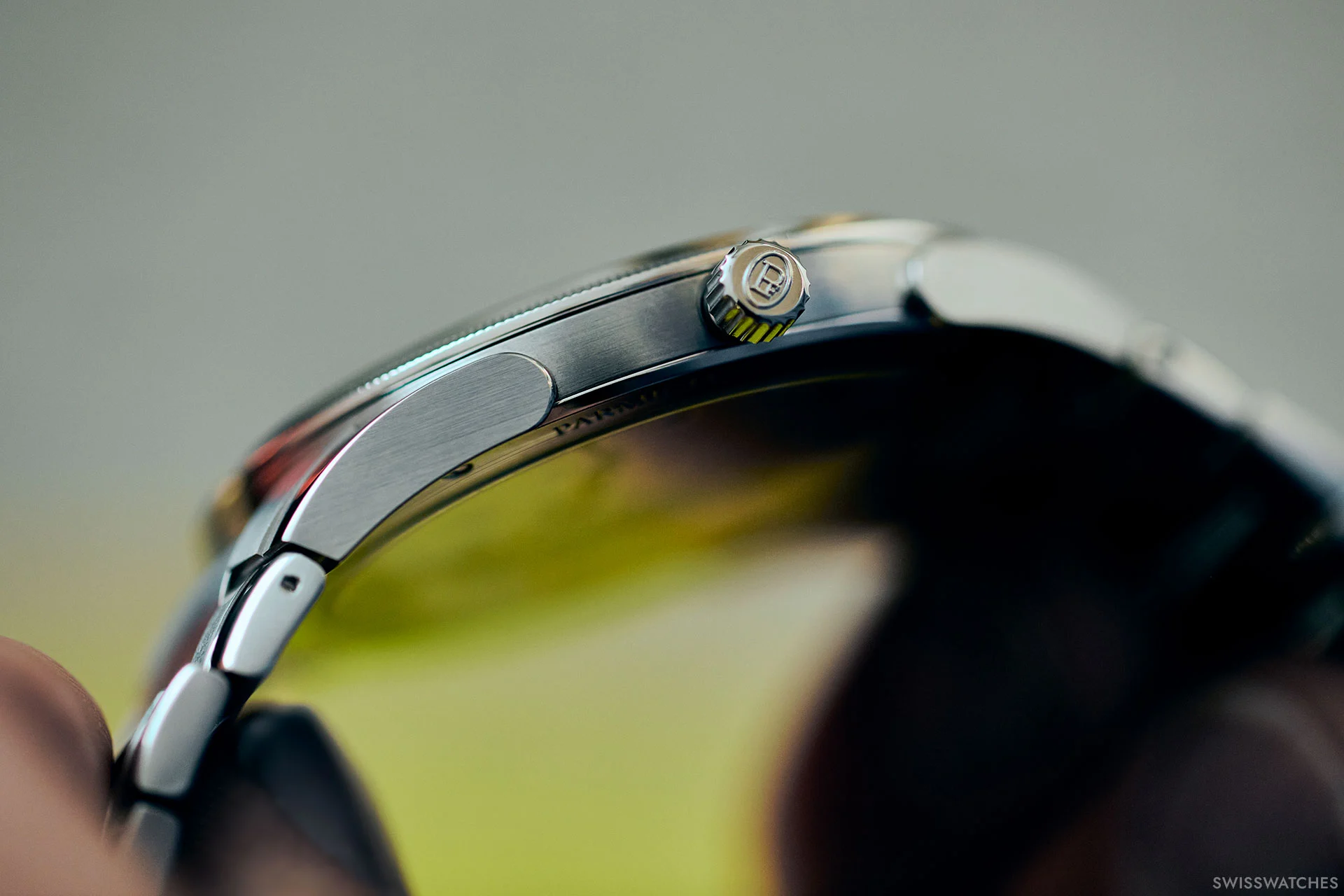
The conference and recreational rooms, including a kitchen, have now been transformed into an event space. The descent takes you through a surreal staircase designed by another architect, Shuji Hisada – like stepping into an M.C. Escher drawing. Having conjured up an image of our backdrop: make way for a very special model of the Parmigiani Fleurier Tonda PF!
The collector quest for something unique
Returning to the initial question: is a limitation of 25 pieces wise? It’s a valid point to consider. I don’t know anyone who wouldn’t care whether a watch they purchase is a mass-produced item or something unusual and distinctive. That said, this desire reflects a highly individualistic, affluent society, where more people want to express their character through rare possessions. Unique products naturally convey a sense of connoisseurship. The price range of the Wempe Signature x Parmigiani Fleurier often attracts business personalities who are accustomed to standing out from the crowd, typically accompanied by a healthy dose of self-confidence. However, entrepreneurs also tend to be critical thinkers, especially when considering a brand that was previously known only to a select few. So, what can Parmigiani do?
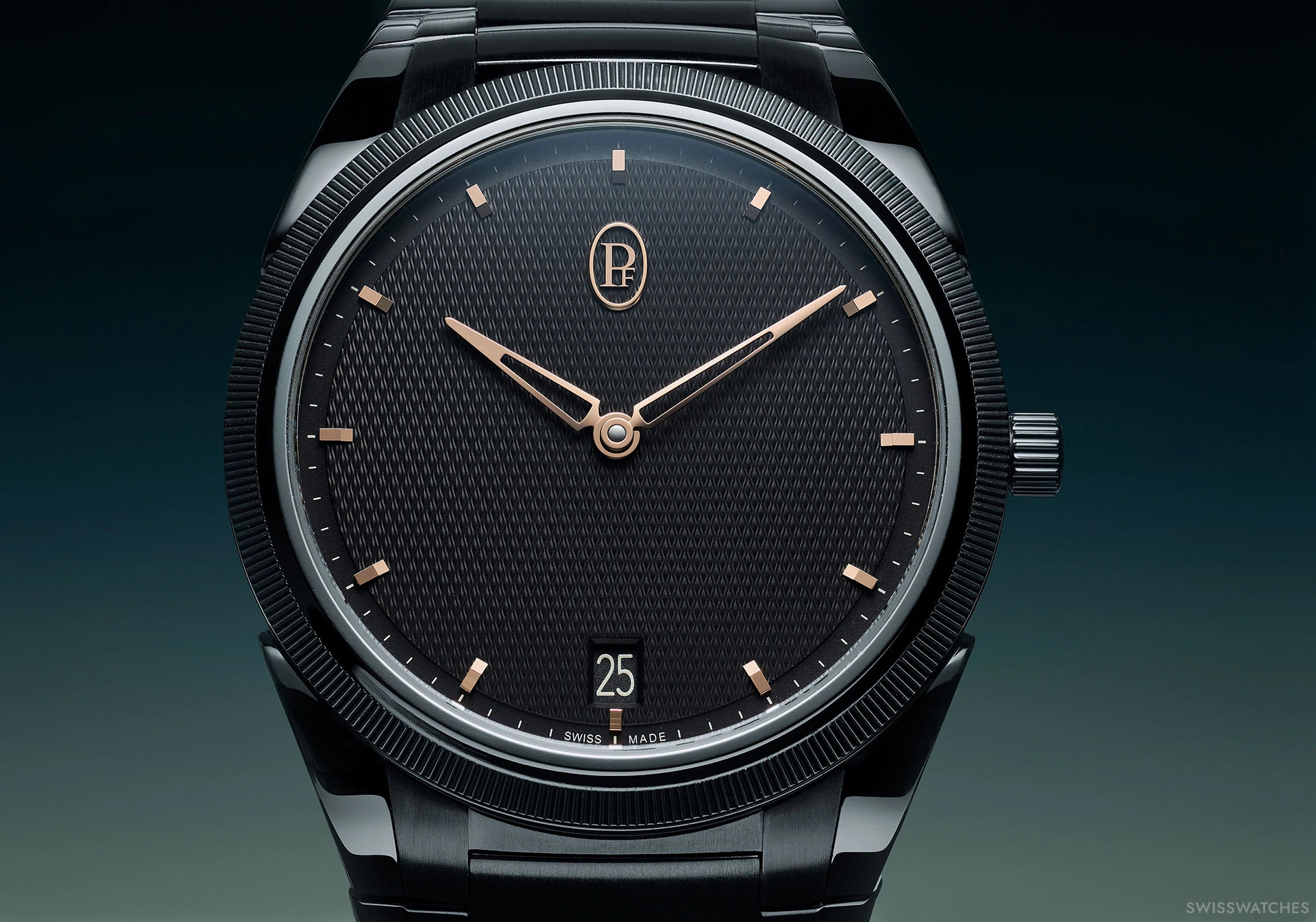
How good is Parmigiani Fleurier?
This brings us to the second question of the evening: Is Parmigiani Fleurier a collector brand? I would answer the question with a counter-question: what time period are we talking about? As if on cue, two men come down the stairs. One is the Managing Director of Wempe in Cologne, Jochen Siemer. The other is Benoit Lecigne, Head of Sales for Parmigiani’s EMEA region. Both have extensive experience in the industry. Benoit, in particular, has been around long enough to have previously worked for the luxury mobile phone brand VERTU – an iconic name for older generations, once recognised as the world’s most expensive push-button phone before the advent of the iPhone.

Almost three decades of Parmigiani Fleurier timepieces
Benoit answers the question about the collector’s brand as follows: “Parmigiani was founded in 1996. In terms of watchmaking, which thinks in terms of centuries, it’s barely an adult. Nevertheless, we fulfil all the prerequisites for playing at the top in the future – because the 28-year history of Parmigiani Fleurier has already been characterised by many milestones.”

For those unfamiliar with these milestones, here’s a brief overview. In 1976, watchmaker Michel Parmigiani established the ‘Mesure et Art du Temps’ atelier to restore antique timepieces. His work on significant watches, including those from the Patek Philippe Museum, earned him international acclaim. In 1996, Parmigiani Fleurier was founded under the patronage of the Sandoz Family Foundation, which still owns the brand today. The first models, including the Toric QP Retrograde and the Kalpa Hebdomadaire, were unveiled in the same year. Twenty-five years ago, Parmigiani Fleurier began its evolution into a fully-fledged vertical manufacture, accelerated in 2001 by the acquisition of Atokalpa and Elwin. In 2003, Vaucher Manufacture Fleurier was established to develop its own movements. Notably, Richard Mille and Hermès have movements produced in this same facility. The dial manufacturer Quadrance et Habillage followed in 2005. Today, Parmigiani boasts over 90 percent vertical integration. From movement plates to lever escapements, screws, gear trains, and even the most intricate components, such as balance springs, everything is produced in-house. As Jochen Siemer, branch manager of Wempe, adds: “Today, Parmigiani is one of the very few manufactures in the world capable of producing every conceivable complication. We are therefore very proud of this collaboration.”

In-house chronograph movements since 2016
I wholeheartedly agree: Parmigiani Fleurier has firmly established itself in the world of haute horlogerie through innovative models such as the Tonda Hémisphères and the 30-second tourbillon. In 2010, the first Tonda 1950was unveiled to celebrate Michel Parmigiani’s 60th birthday, followed by exquisite pieces like the Ovale Pantographe and the Tonda 1950 Tourbillon. A significant milestone for many collectors came in 2016 with the introduction of the brand’s first integrated chronograph. The launch of the Tonda PF collection in 2021, commemorating the brand’s 25th anniversary, and the appointment of Guido Terreni, former President of Bulgari, as CEO, helped to ensure that Michel Parmigiani’s tradition and legacy endure. In my opinion, Parmigiani now embodies refinement and craftsmanship like no other Swiss watch manufacture.
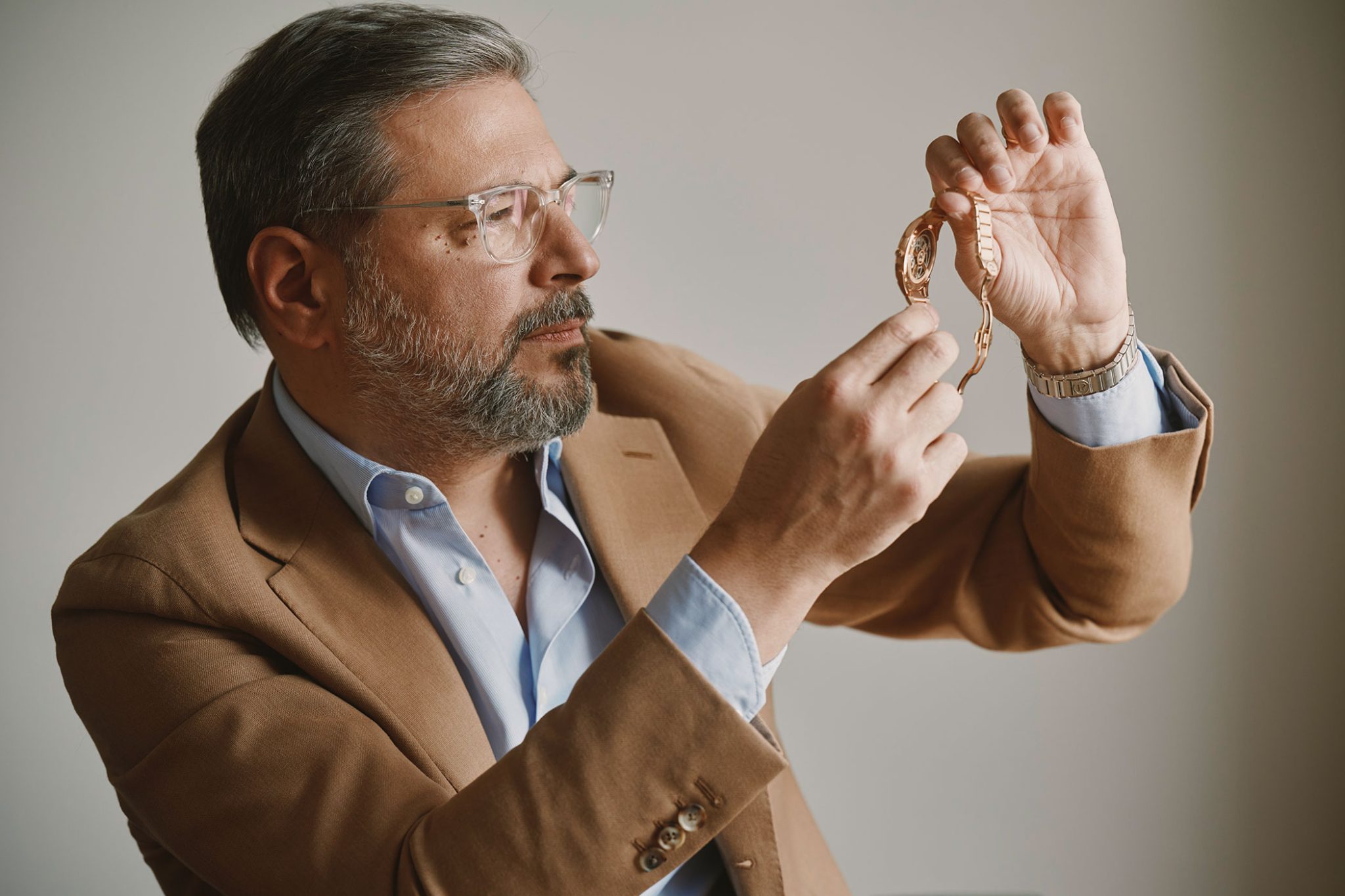
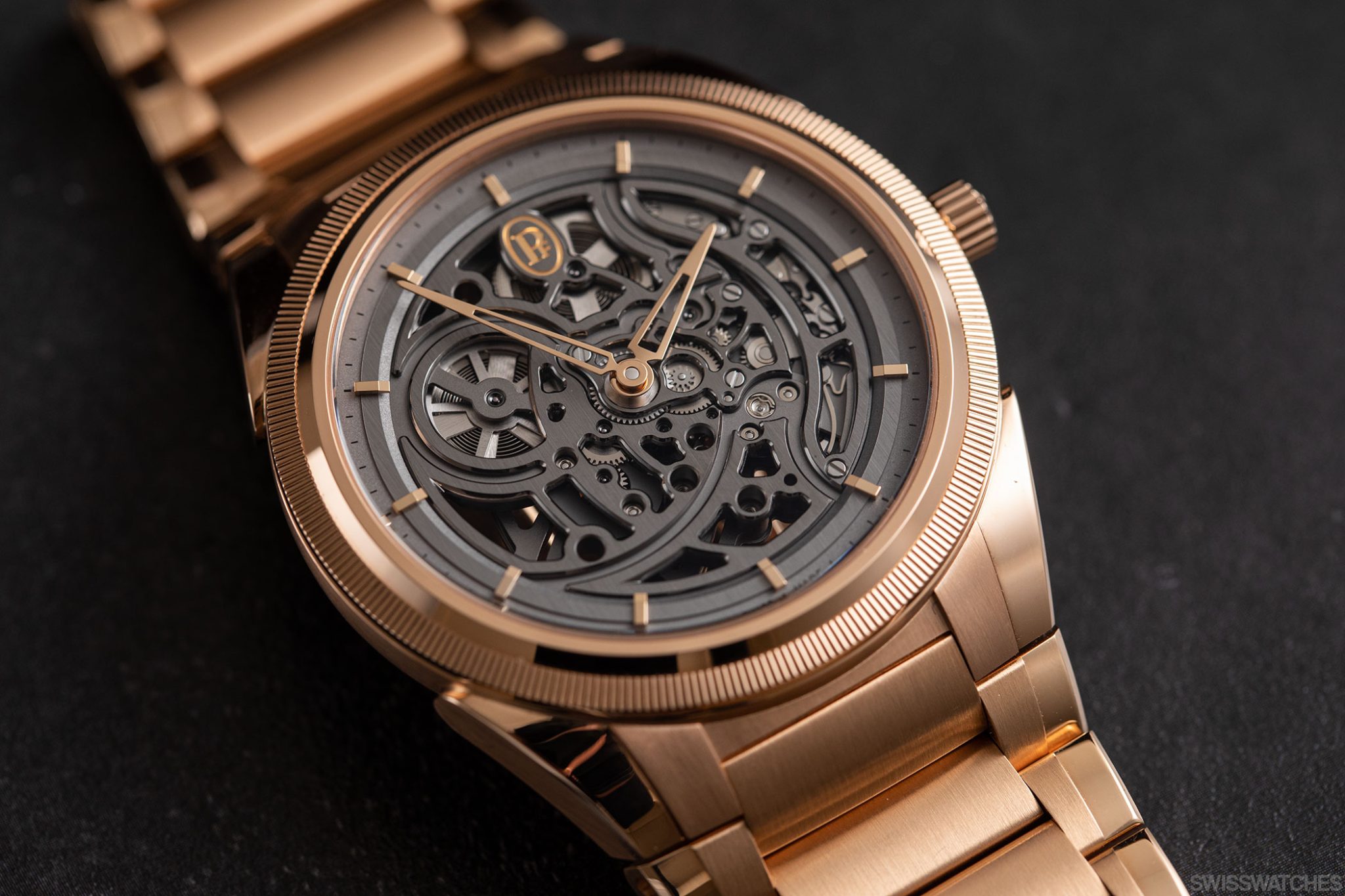
How many pieces constitutes a good limitation?
The third question arose later that evening in the wine cellar, after a few glasses of red wine: what constitutes a good limited edition for wristwatches? This is a common query, but unfortunately, no expert can provide a definitive answer. The simplest response is that the ultimate limited edition is a unique piece. It doesn’t even have to have been originally presented as a limited edition for a model to gain value. Take the Rolex Daytonaworn by Paul Newman, for instance; it is the most valuable series-produced wristwatch in the world. By contrast, the Patek Philippe Grandmaster Chime Ref. 6300A-010, the most expensive wristwatch ever sold, was a one-off. The Daytona, produced in stainless steel and approximately 3,000 units, became unique due to its special engraving and remarkable history.
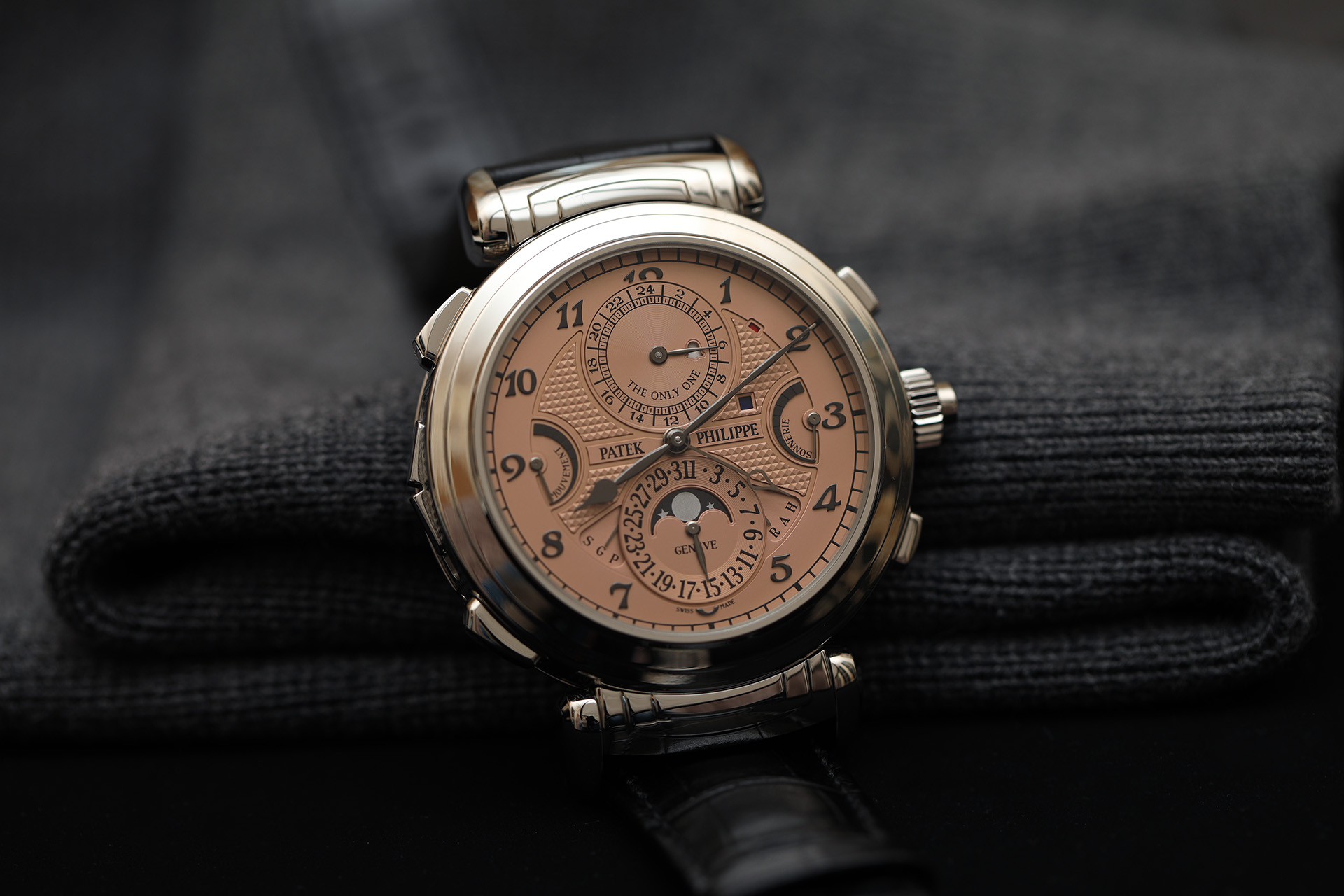
The Parmigiani Tonda PF Microrotor: On the wrist
During the shoot, I had several opportunities to examine the model up close while putting it on and taking it off. Specially for the Wempe Signature Collection, the oscillating weight is crafted from solid pink gold, in contrast to the usual Parmigiani platinum. The knurled bezel, however, remains made of the most discreet precious metal to minimise the risk of scratches. The finishing of the movement is as multifaceted as it is exceptional: Côtes de Genève alternate with intricate hand-finishing, mirror-polished screws, and bevelled bridges. While such craftsmanship is expected from a manufacture that designs and produces its own movements, achieving a harmonious whole is an art in itself. Parmigiani’s movements exemplify this beautifully.

The dial: Top-class craftsmanship
This is particularly evident in the dial. Not only is it handcrafted with a beautifully intricate grain d’orge guilloche, but the dial design, featuring a matte anthracite finish with polished rose-gold indices and hands, is exclusive to the TONDA PF Micro-Rotor from the Wempe Signature Collection. To the untrained eye, this might seem like a minor detail, but this two-tone design lends the watch its distinctiveness. The wearability of the wristwatch is also exceptional. At just 7.8 mm in height (a benefit of utilising an in-house movement with a micro rotor), the watch slips effortlessly under any cuff. The rounded case profiles and lower lugs further enhance its above-average wearing comfort.
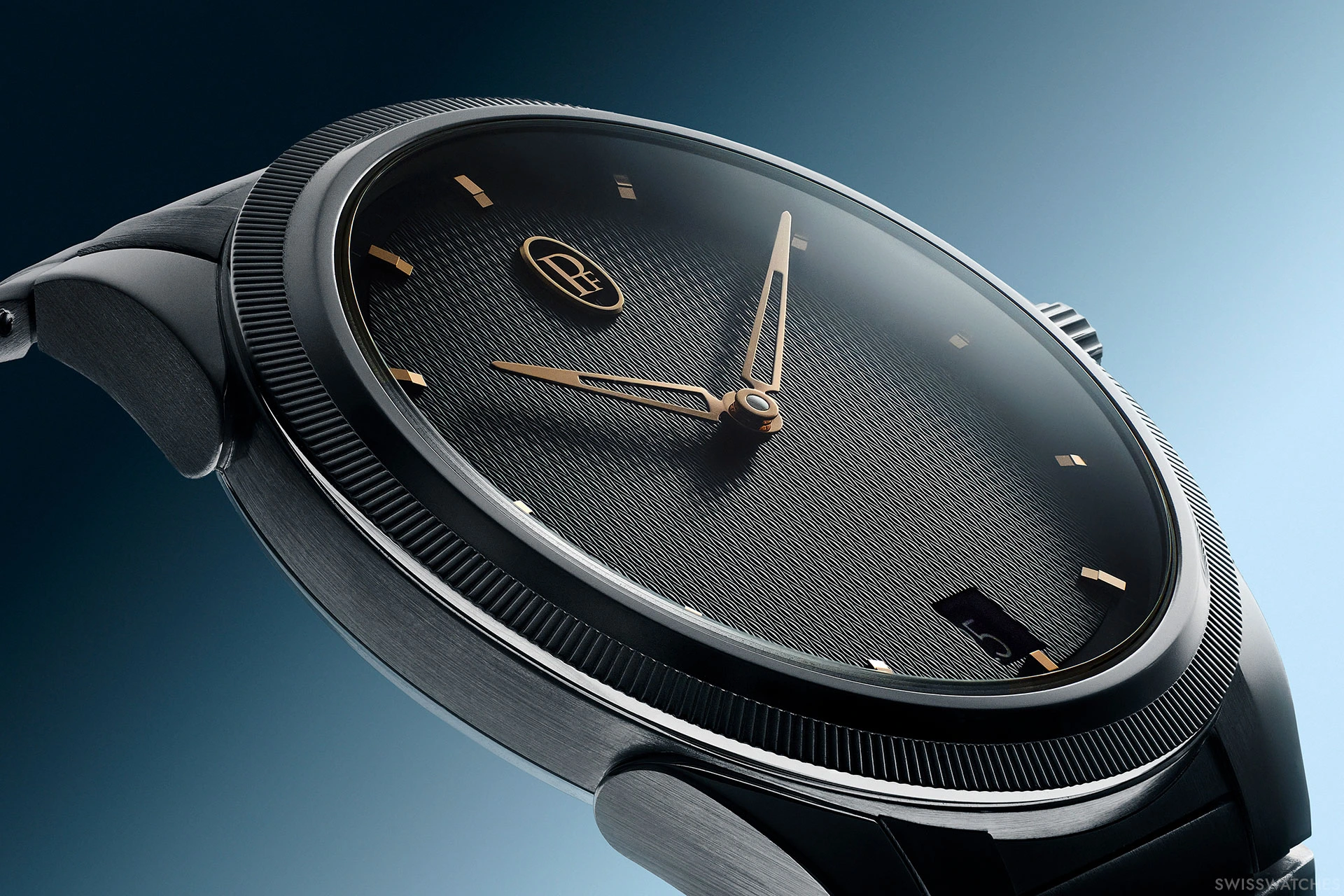
What would constitute a bad limitation?
Returning to the wine evening, the fourth question posed by the guests was: what might constitute a bad limitation number? Interestingly, it’s not necessarily an unlimited production model. Otherwise, the aforementioned Paul Newman Daytona would never have fetched an auction price of 15.6 million euros. Ultimately, any watch can gain significant value, particularly through the fame of the individual who wore it. As for fans of Rolex: it’s worth noting that the Genevan brand has never issued watches with official limits. While there are off-catalogue models, the only exceptions are certain models previously ordered by armies or companies; otherwise, these are all small series.
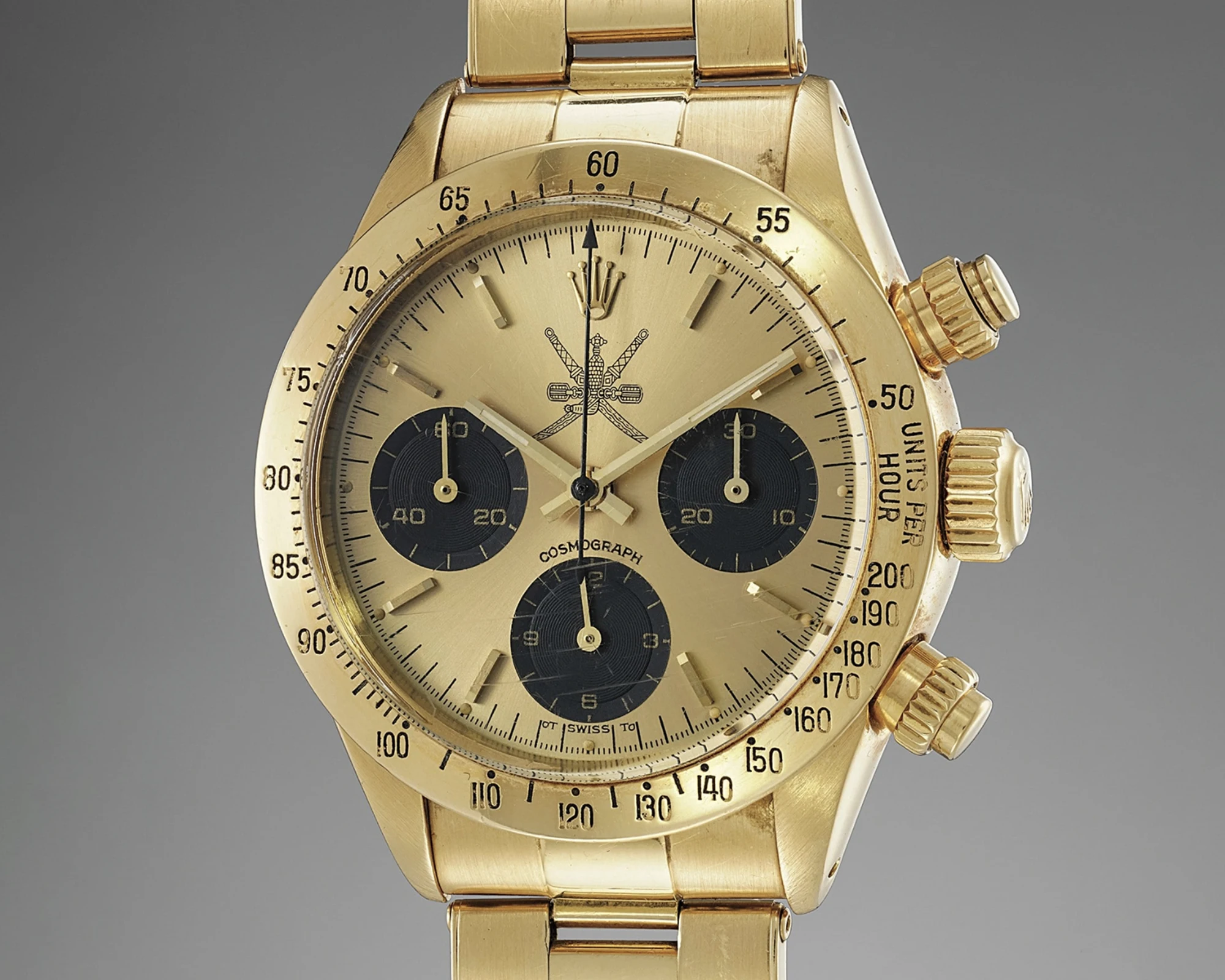
Credit © Phillips
What is the difference between a limited edition and a small series?
So, what can we say about the 25 examples of the Parmigiani Tonda from Wempe? Naturally, this is a small series, a so-called ‘edition’. Such models are typically created to celebrate a specific theme, occasion, or product – like the 50th anniversary of the Royal Oak in 2022 or Piaget’s 150th anniversary this year. A retailer like Wempe and a manufacture like Parmigiani can, in theory, showcase their strong partnership at any time by launching a model in this manner. This complicates matters for collectors.
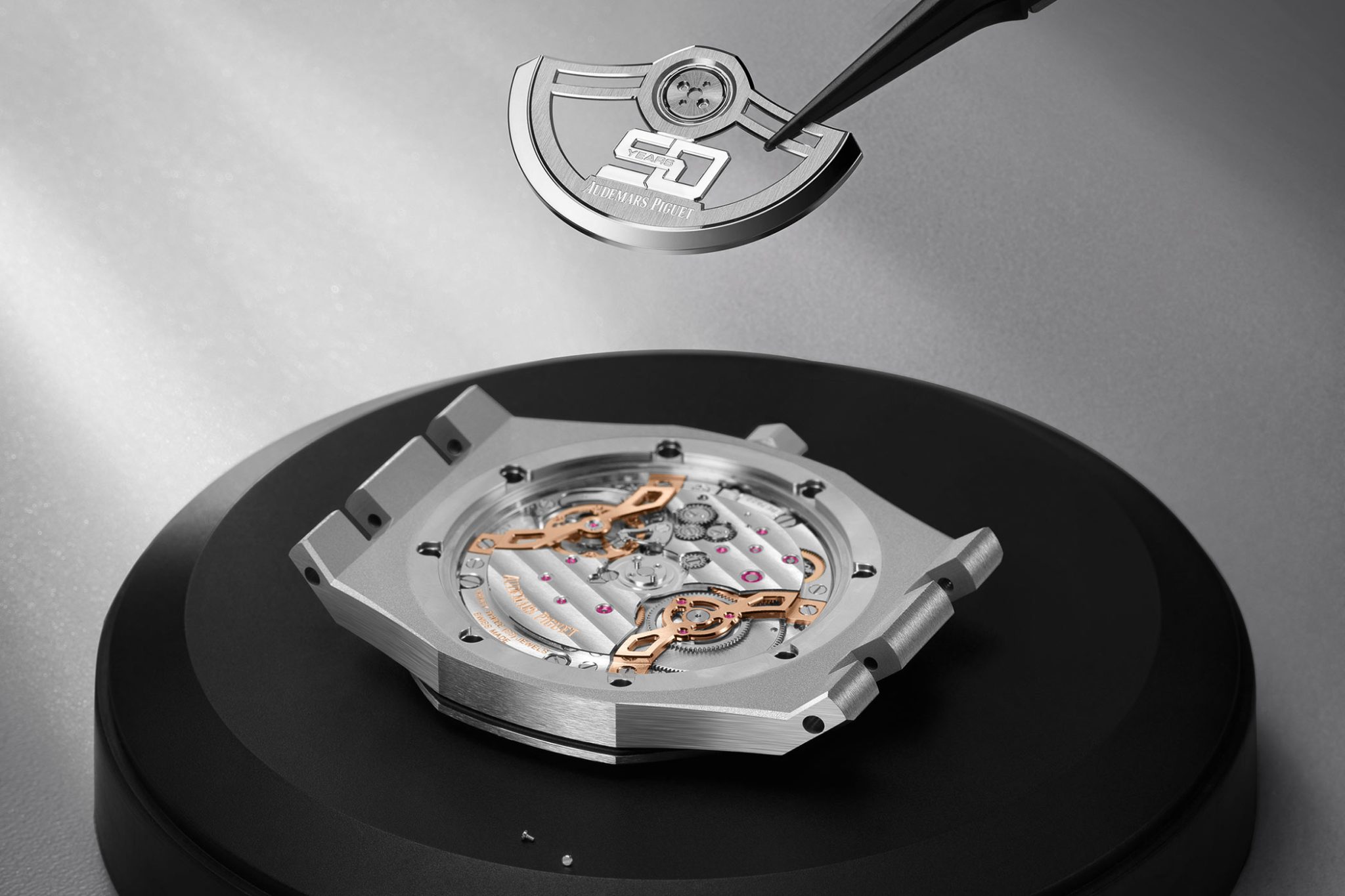
Local edition or global edition?
When it comes to editions, there are two key distinctions: global editions and local boutique editions. Increasingly, brands are launching in-house editions for their monobrand boutiques to attract customers to their own stores, resulting in numerous, sometimes strictly ‘limited’ boutique editions. A Tokyo boutique-only edition, for instance, is primarily a marketing strategy. Can it become valuable? Not necessarily, but if it signifies a special moment in the buyer’s life, it can acquire emotional significance. Ultimately, the wearer must also play a role, perhaps becoming a president, actor, or pop star. The Wempe Signature x Parmigiani is a global edition, yet it is exclusively available at two Wempe locations: New York and Cologne.
Where does the design of the Wempe Signature x Parmigiani come from?
I had the opportunity to discuss this with the head of Wempe prior to the event. Customer preferences served as the inspiration: the timepiece was envisioned to be unisex, cross-generational, versatile, and distinct from typical vintage aesthetics. As Kim-Eva Wempe stated, “In a world often filled with loud statements, the demand for a discreet appearance is increasing.” She adds, “If you have style, you’re quiet about it.” For this watch, the skilled Wempe team collaborated with Parmigiani Fleurier on the design: Bernhard Stoll, CEO of the Wempe Watch Division, along with branch manager and expert Uwe Beckmann, created the Tonda PF Micro-Rotor.

What can collectors expect from collaborations?
Recently, we have witnessed a growing trend of so-called global collaboration editions, including the Wempe Signature series. This form of partnership is not new; entire books have been dedicated to the collaborations between jewellers and brands. As mentioned in our article on the Wempe Signature Edition with Girard Perregaux, Wempe has something truly extraordinary to offer in the realm of so-called Double Signed watches, where both company names are prominently displayed on the dial. You can read more about it here: Wempe Signature Edition with Girard Perregaux.
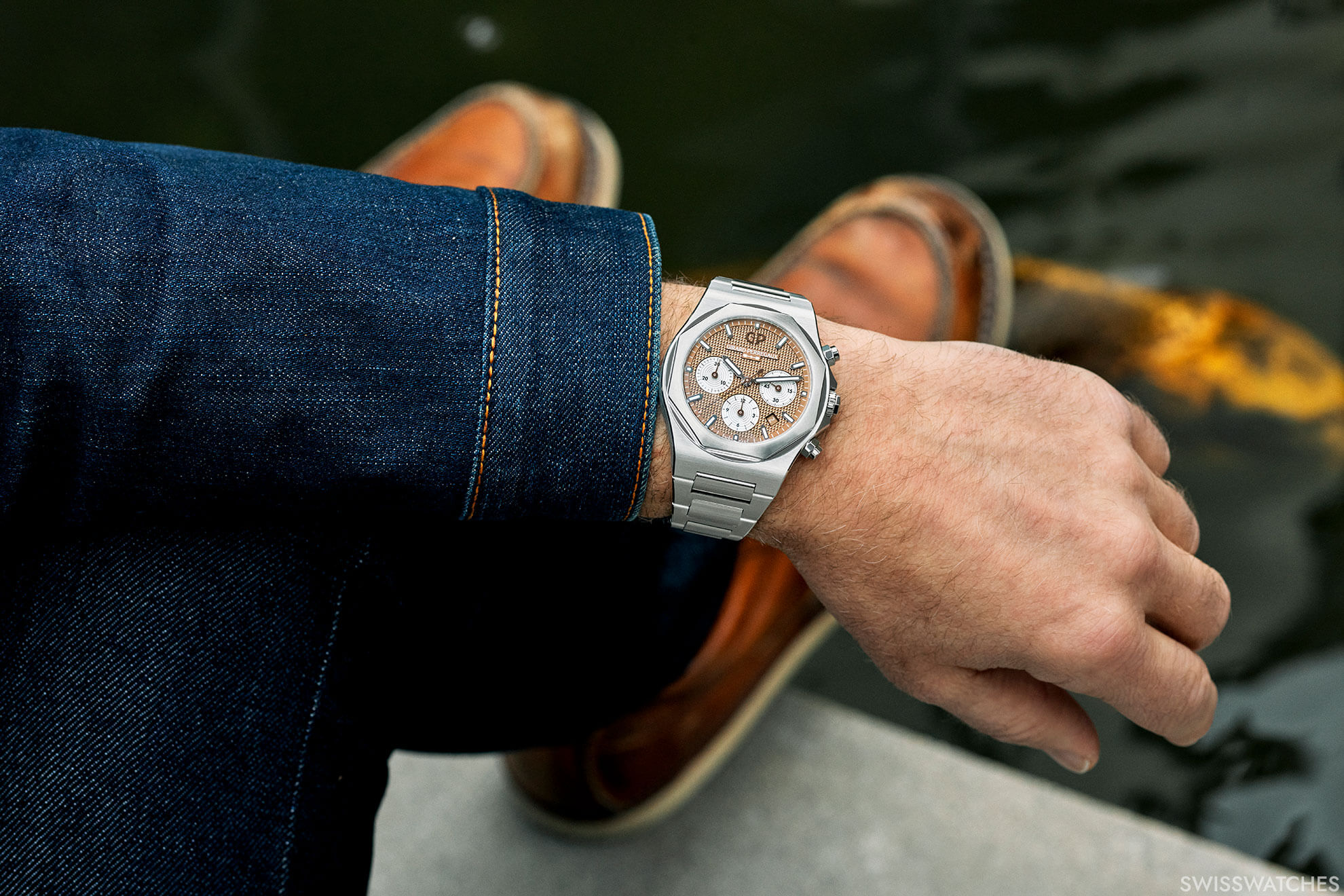
Consecutive numbers
Let’s turn our attention to other questions posed by the guests, who were increasingly impressed by the exceptional wearing comfort of the Parmigiani Tonda PF, regardless of the wine they were continuing to savour. After taking off the watch and turning it over, a guest inquires about another certain detail: do limited edition models need to be numbered consecutively? Is it sufficient for the caseback to simply state: One out of 25, as is the case with this watch?

Elaborate, but not automatically value-enhancing
Numbering is a time-consuming process and does not necessarily increase the value of a limited edition watch like this one. Very few companies engage in it, which could be seen as a testament to their rarity. While it can be enjoyable for collectors to celebrate their birthdays, lucky numbers, or entire watch collections with a specific number (and such collectors do exist), there is a more pragmatic reason why fewer companies opt for this practice. If a watch brand sells products globally and, for instance, sends five watches to Wempe in New York numbered 1 to 5, but a customer there really wants the number 25 because it coincides with their birthday, the retailer faces a dilemma. The watch would need to be transported from another location, import taxes reversed, and it would have to make a lengthy journey back with a special courier.
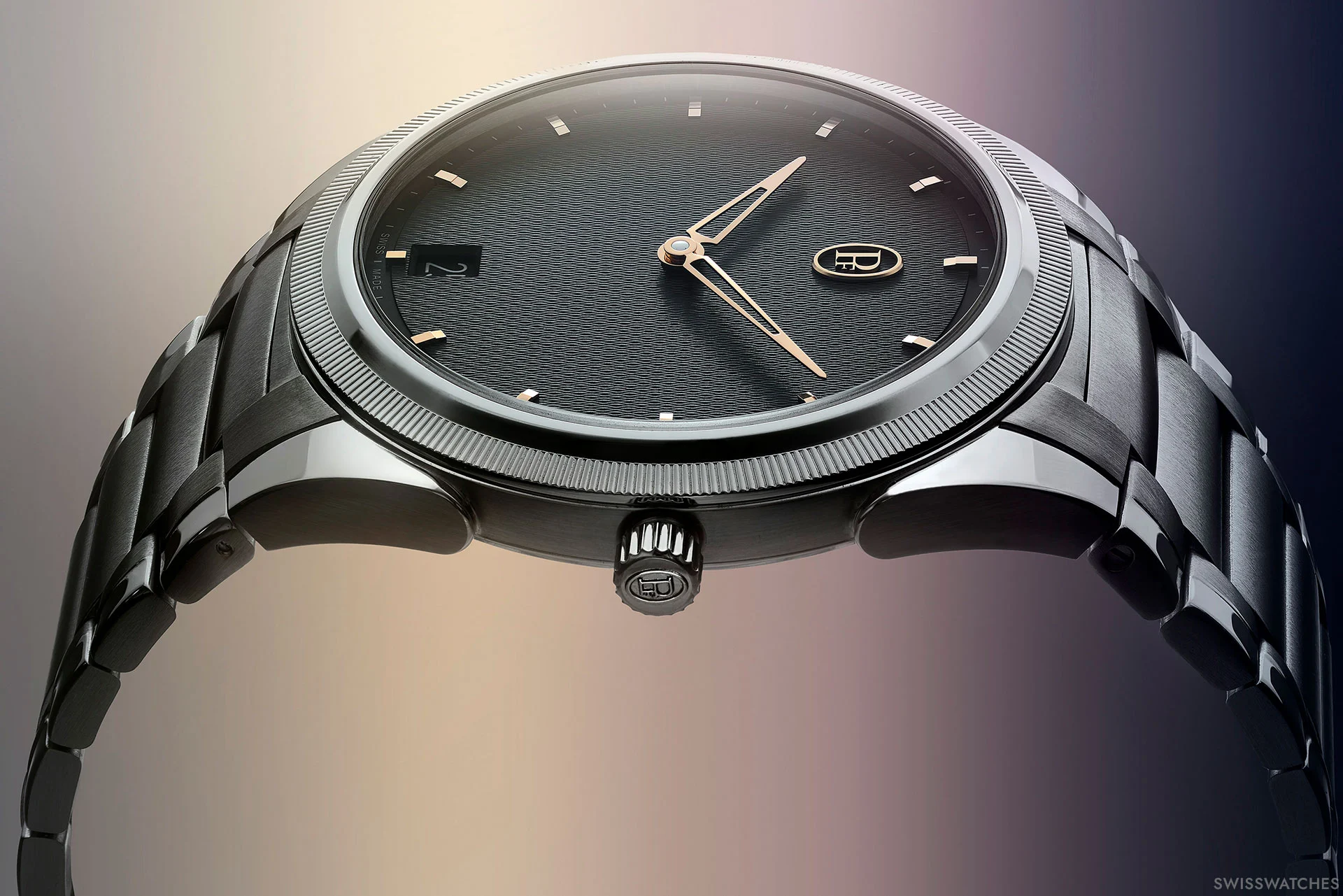
The most important question: Is 25 pieces a good limitation number?
The penultimate question of this entertaining evening is: what about the number of watches? Is 25 pieces particularly desirable? Does this low limitation help preserve value? Absolutely. However, does it guarantee an immediate increase in value? Not necessarily, as the watch has only just gone on sale. Despite the hype surrounding certain models in recent years attempting to suggest otherwise, the reality is that even exceptional watches typically do not double in value overnight.
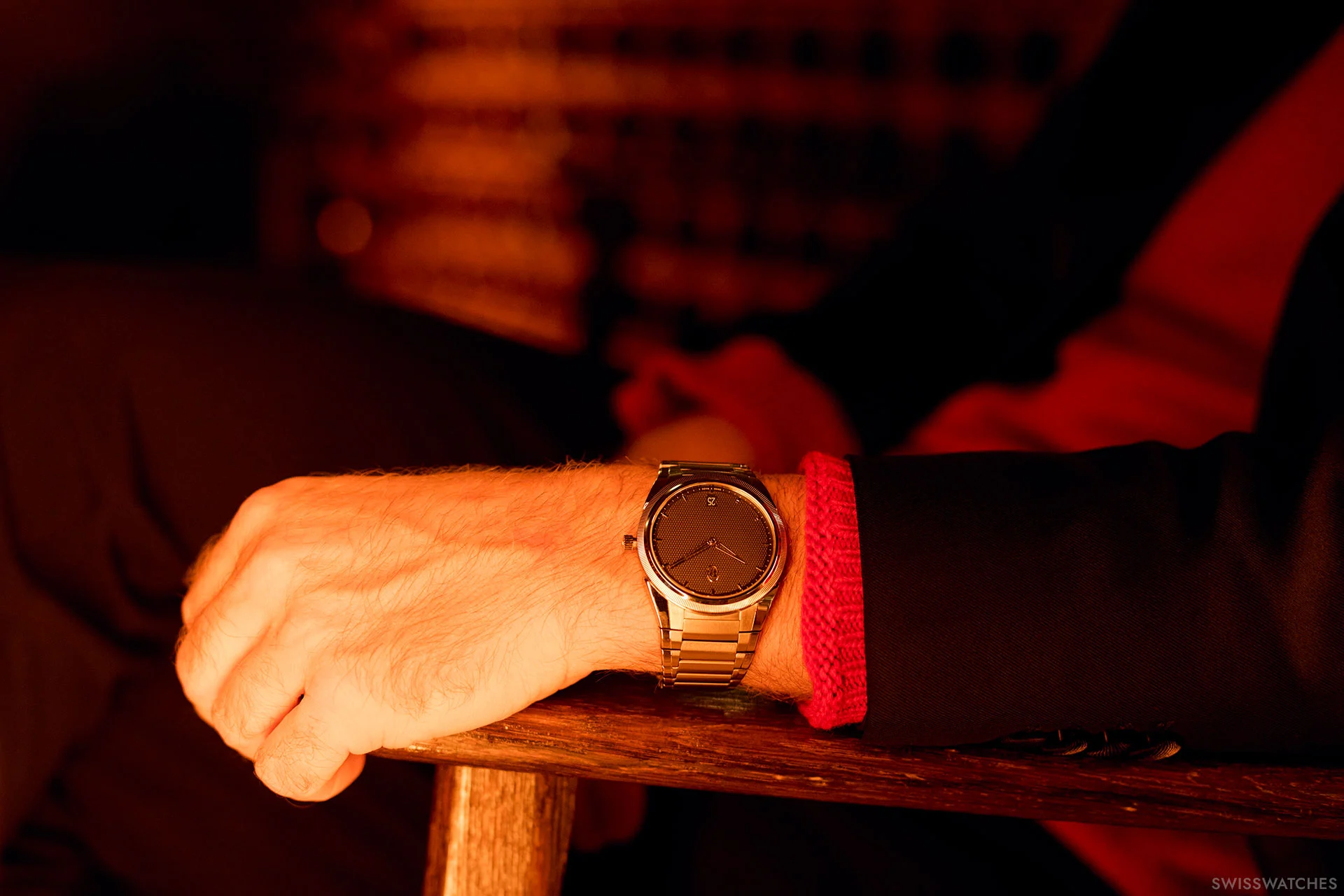
Number of pieces in relation to annual production
As a customer who values rarity, the number of limited editions should be assessed in relation to a manufacture’s annual production. For instance, Rolex produces approximately one million watches each year, while Patek Philippe manufactures around 70,000, A. Lange & Söhne about 5,500 – and Parmigiani? Estimates suggest their annual output is between 2,500 and 3,500 watches. Consequently, it is inherently less likely to encounter someone wearing the same Parmigiani as you would with a Patek Philippe, although this distinction of course does not directly correlate with a watch’s value. Moreover, while no one wants to be just one among a million, the world still has a fondness for Rolex watches – and the author counts himself among them.
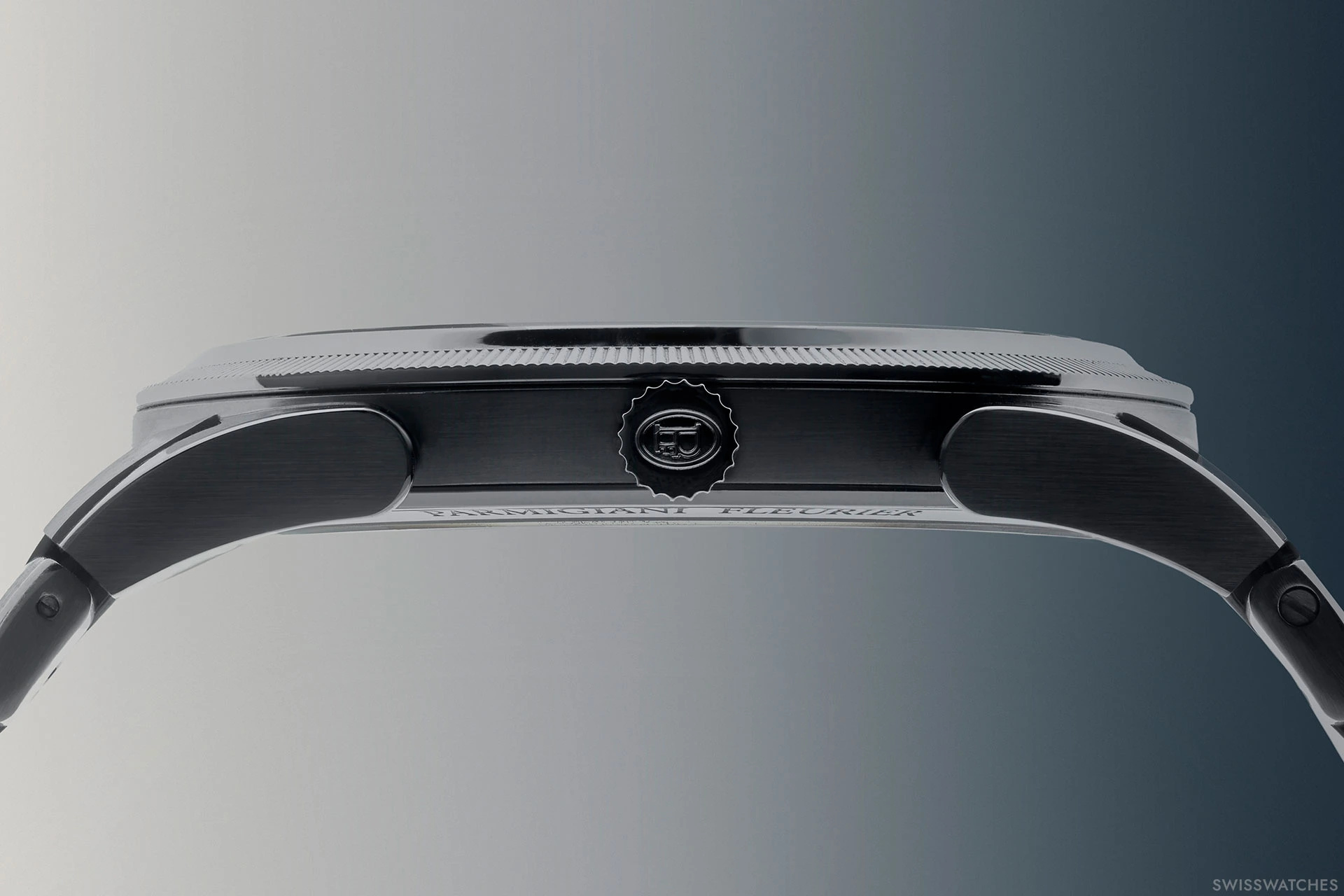
Are there indications regarding an ideal limitation number?
For those seeking definitive answers, are there any indicators to consider? Here’s a bit of insider information: amongst collectors, limited editions of 10, 25, and 50 are generally regarded as rare. A manufacture must go to great lengths to produce watches in such small quantities and then never again. It varies by brand, but with these limitations, suppliers often approach the limits of profitability, as mechanical watches are typically produced in batches of 50 or more, sometimes reaching several hundred pieces. In cases where only five pieces are made, fortunate customers may even have a say in the design, making those pieces akin to unique creations.
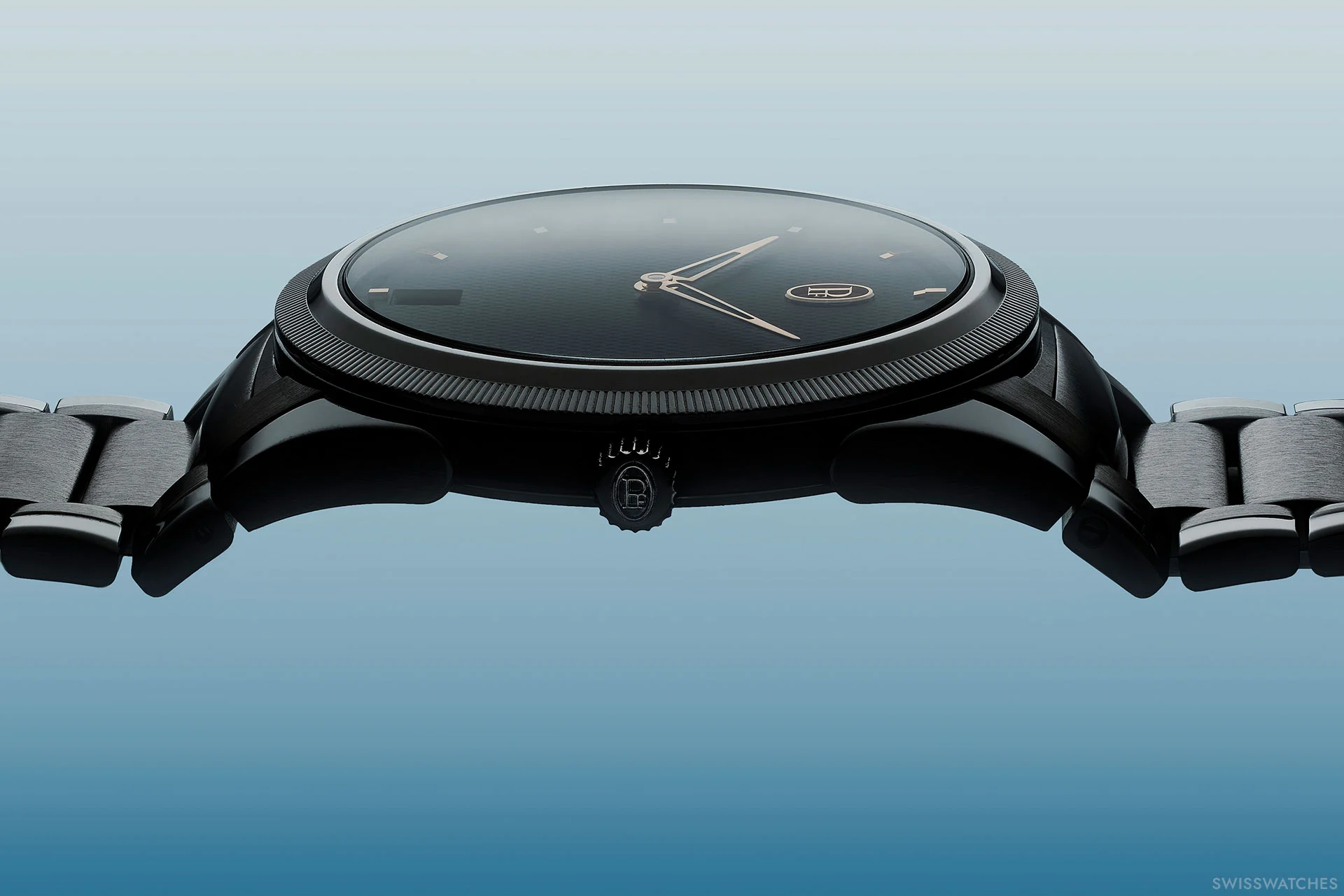
The magic lower limit: 100 pieces
For collectors, the number 100 is often seen as the magic threshold for limited editions. Once a production exceeds 100 pieces, it is more likely to be considered a series. Such series do hold value, as demonstrated by the Paul Newman Daytona, which was also part of a series. However, the collector’s value of most watches is not determined by the first buyer, but rather by the next generation, often decades later. Collector trends can change just as rapidly as certain details of a series may vary from one year to the next. The aging of specific elements on the dial, or even the dial itself, can also significantly influence a watch’s desirability.
What does ‘limited’ really mean for watches?
To conclude, true limitation, in the classic sense, means that production of the product has ceased entirely. This item will never exist again in its current form, nor can it be reproduced because the machinery used is different, a new movement has been implemented, or the necessary tools are simply no longer available.
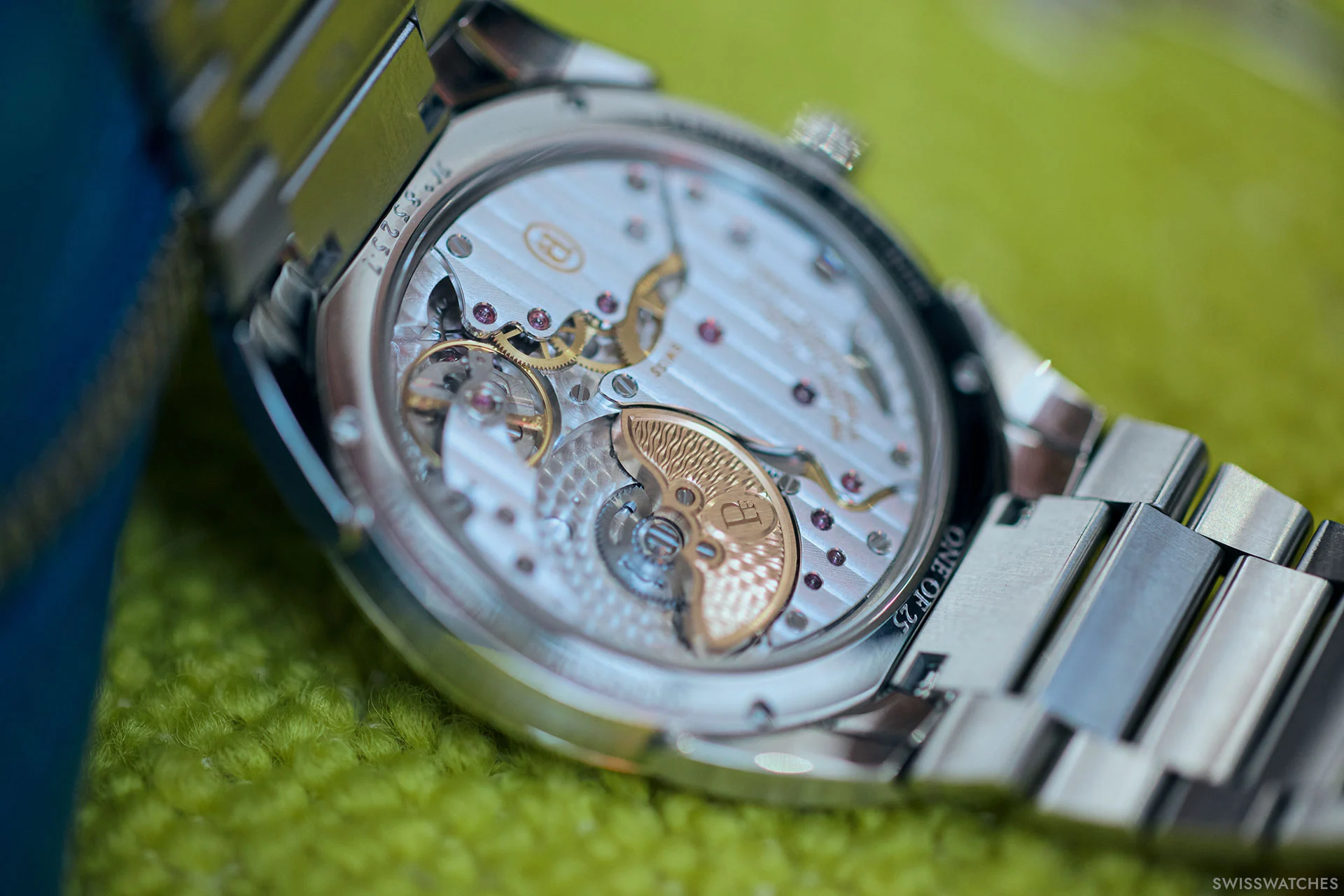
Rare watch models: The holy grail in the collector’s community
There’s no question that rare models or genuine limited editions are considered the holy grail within the collecting community. A significant part of many collectors’ motivation lies in the pursuit of the ultimate limited edition wristwatches. Perhaps the simplest approach would be to purchase models worn by a famous actor or pop star – after all, Instagram is flooded with so-called watch spotters. However, this approach often lacks true taste and individuality, particularly if the goal is merely to wear your idol’s watch.
Will Parmigiani Fleurier watches increase in value?
In my personal opinion, if all the Wempe Signature Parmigiani watches are sold and the brand continues to invest significantly in its manufacturing and reputation over the next few decades, while also adhering to iconic designs like the Tonda PF Microrotor, it is highly likely that these watches will grow in value. Having collector’s intuition involves purchasing items when their numbers are still limited and before everyone has jumped on the bandwagon.
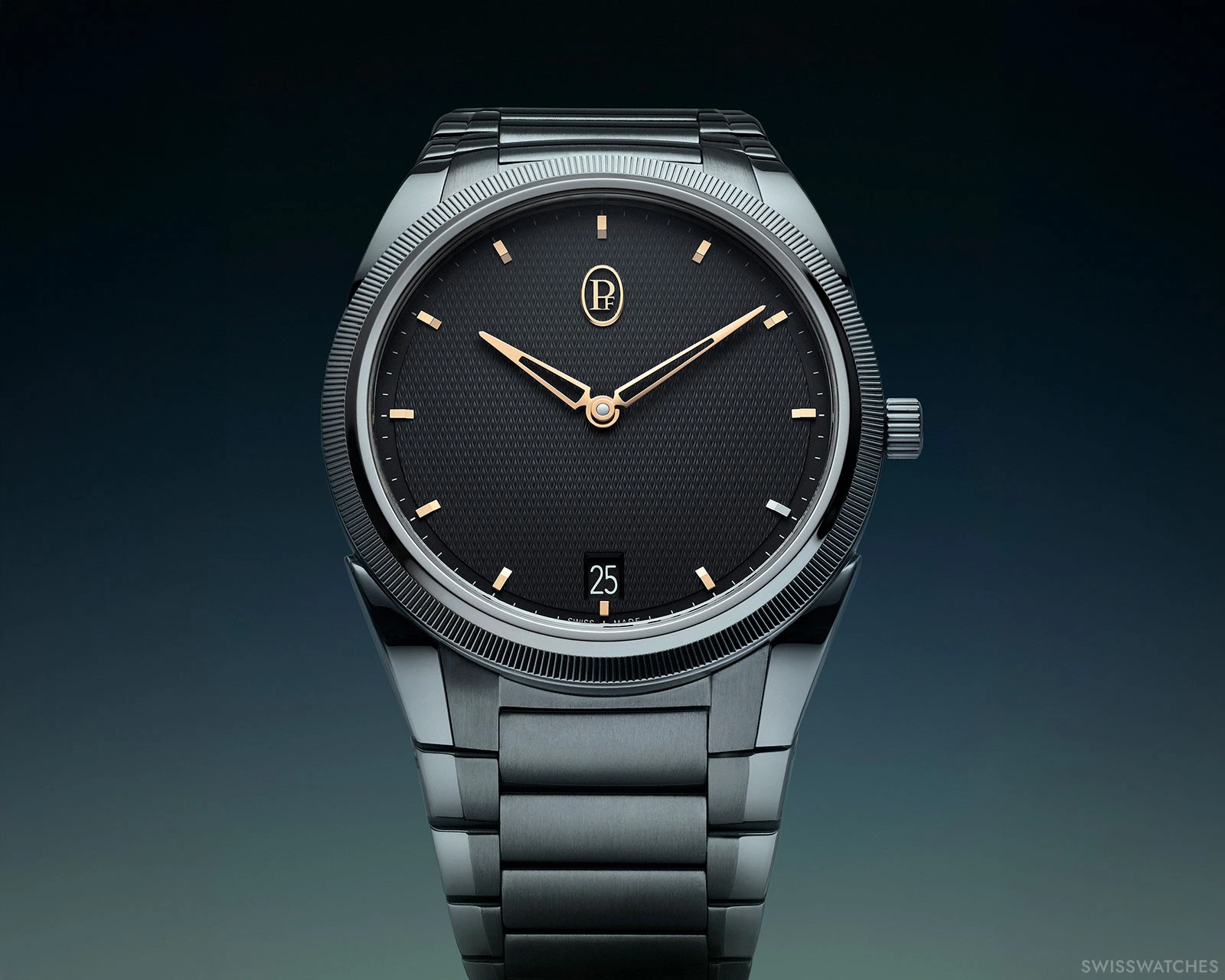
Who is this Wempe Signature Parmigiani for?
So, who is the Wempe Signature Collection x Parmigiani designed for? This model is tailored for individuals who prefer not to flaunt the values represented by the watches on their wrists. They no longer feel the need to prove their ability to afford a Nautilus, a Royal Oak, or a Rolex Daytona, nor do they need to demonstrate their access to such esteemed brands. I’m referring to those who have confidence in their own taste and choose to leave the growth in value to their investment portfolios.
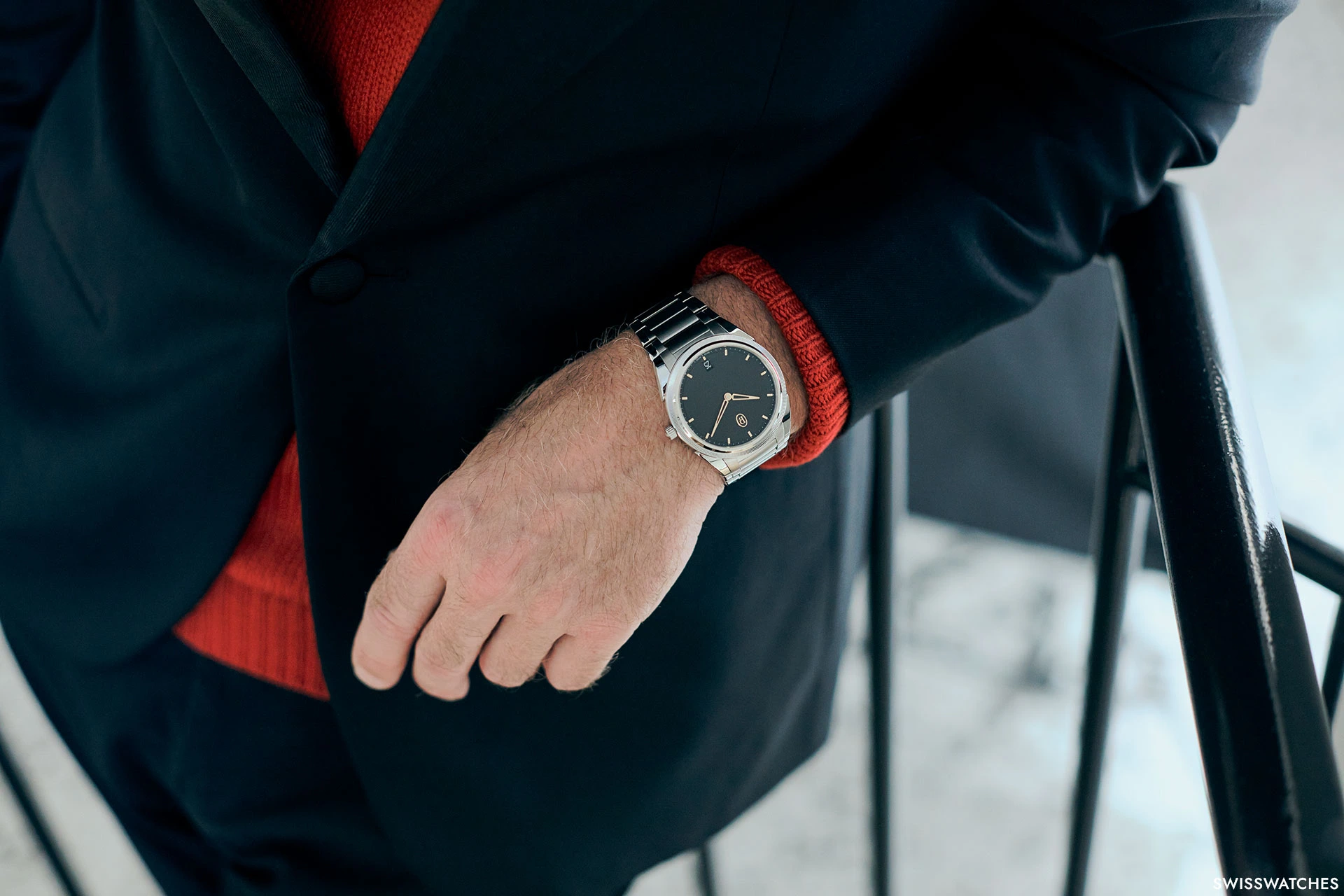
A vision for watch design
What impressed me most during my time spent in Cologne? The Tonda PF embodies the perfect symbiosis of fine watchmaking and contemporary design. It reinterprets the aesthetics of the most iconic watch category of the 20th century – steel sports watches – while also hinting at the future of watch design in various details. This design celebrates the art of omission without coming across as overly minimalist. The 25 pieces honour the special relationship between an independent luxury watch retailer and a brand that truly knows how to celebrate style.
One in 25 people worldwide
I would venture to say that being one of only 25 individuals in the world who embody these values is more than enough motivation for prospective buyers of a Tonda PF at Wempe. What I appreciate about Parmigiani is its forward-looking perspective; the brand focuses on innovation rather than nostalgia. While vintage tool watch designs from the 1960s were thrilling in their time, we no longer require such aesthetics to scale Mount Everest. Fortunately, the jet-set era is behind us. Today, mechanical achievements need not proclaim, “Look at my money.”
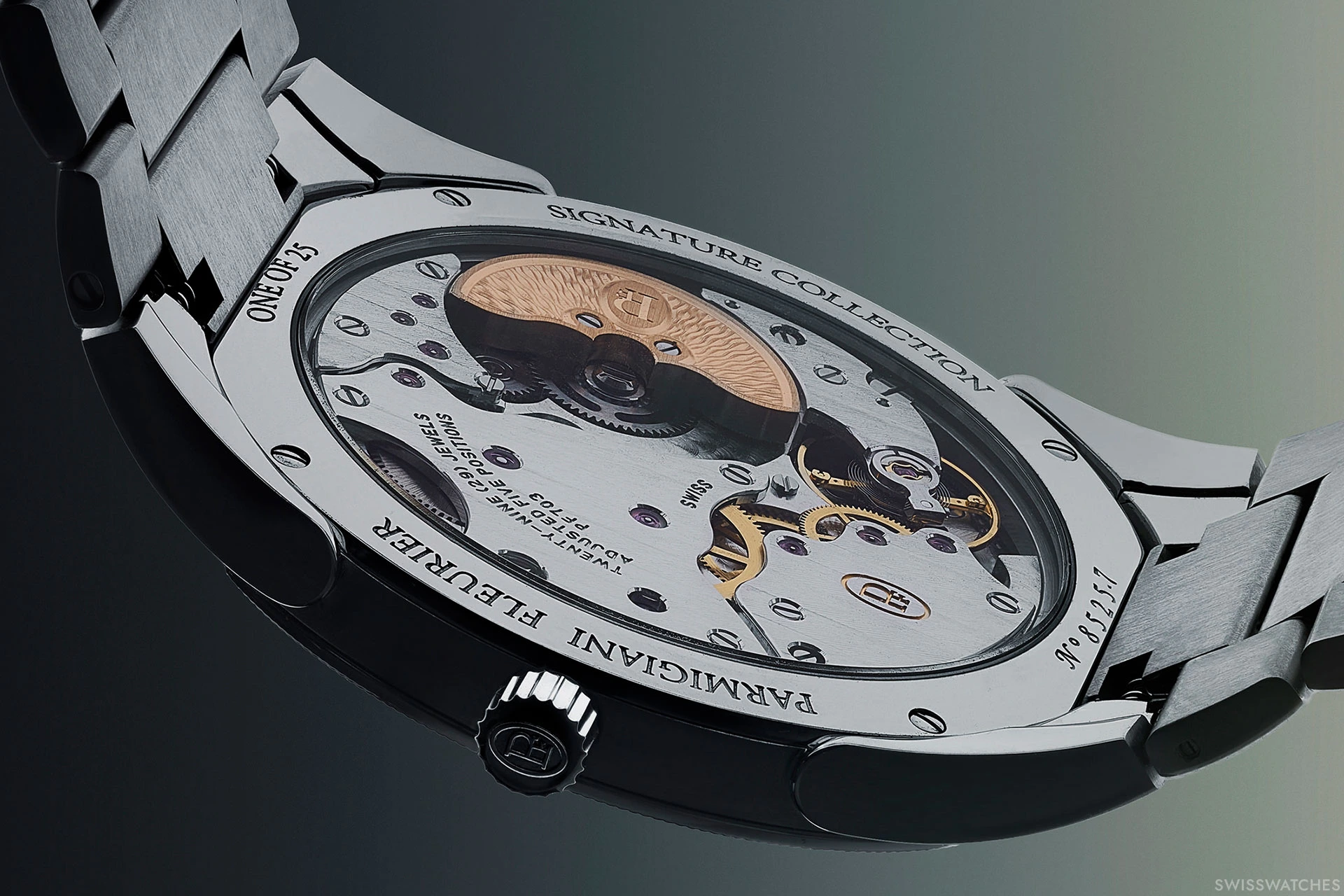
Parmigiani Fleurier: Transforming mechanics into poetry
Perhaps more than any other watch brand, Parmigiani embraces a time in which mechanical wristwatches serve as both practical tools for collectors and profound works of art. These timepieces transcend mere functionality, becoming poetic objects that can outlast us while preserving a unique narrative for future generations. When they achieve true value, they become cherished legacies for those who follow.
The perfect steel watch for life
To me, the elegant yet sporty Tonda PF from Parmigiani and Wempe embodies the brand’s evolution into the 21st century. It continues the vision of renowned designers like Gerald Genta, who championed the belief in a brighter future during the 1960s and 1970s. If I could select just one watch, the Parmigiani Tonda PF would undoubtedly be on my shortlist. My admiration for the Wempe family makes this edition particularly ideal. It stands as the perfect steel watch for life: perfectly balanced, without veering into excess.
